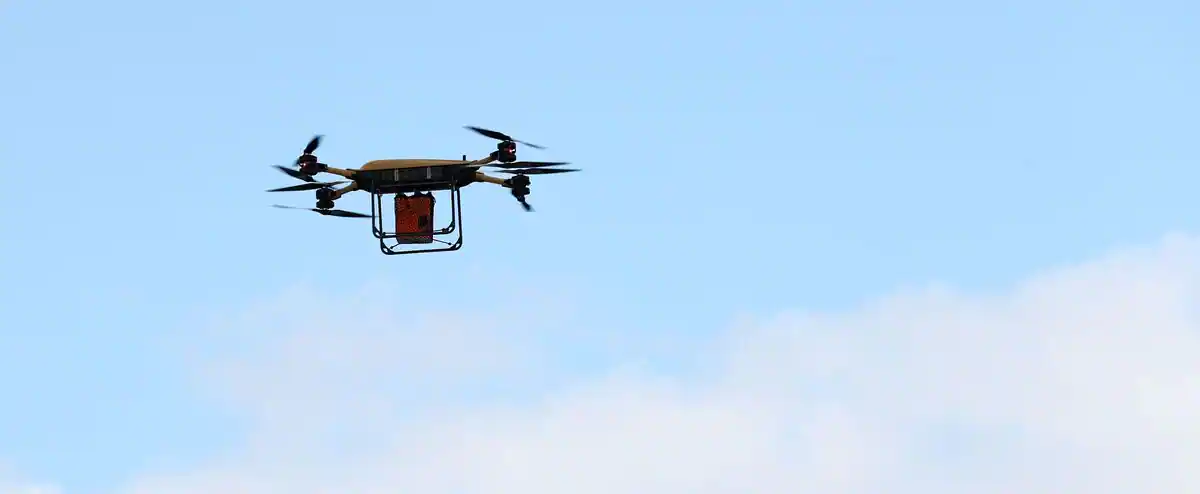PARIS | Officially, it’s a research vessel, but the military dimension is obvious. China has unveiled a probably unique drone ship, a new embodiment of the growing importance of these unmanned vehicles in modern warfare.
• Read also: ‘Growing number’ of unidentified objects in sky, Pentagon reports
• Read also: Swarms of autonomous drones successfully tested in the wild
Chinese state media relayed at the end of May the launching of this boat presented as a jewel of maritime research, operational by the end of the year and which will carry an unspecified number of aerial drones, sailors and submarines.
88.5 meters long, the Zhuhaiyun – Where Zhuhai Cloud — will be able to reach 18 knots (33 km/h). Chen Dake, a researcher at the Chinese Academy of Sciences and director of the laboratory that owns the ship, presented it to the China Daily as a “breakthrough innovation”.
According to him, the ship is not only an unprecedented precision tool at the frontiers of maritime science, but also a platform for the prevention and management of maritime disasters, precise mapping of the seabed (…) and rescue at sea. .
But the strictly scientific use of the object, itself remotely controllable, is not very credible. Especially since the switch to the military is simple: the autonomy or semi-autonomy of a machine is a matter of lines of computer code. The technology is the same.
The drone carrier is therefore a tool of choice in the service of Chinese interests in the Indo-Pacific.
And one more step towards the use of drone swarms for military purposes, as battlefields around the world, from Afghanistan to Libya to Ukraine today, increasingly show the importance of these technologies in modern warfare.
“Escalatory, aggressive”
China and the United States are at the forefront in this area, ahead of important second-tier players such as Israel and Turkey. Ankara is even developing a project to transform its Anadolu aircraft carrier into a combat drone carrier.
But Beijing’s presentation of this ship remains sibylline. “There is a lack of empirical data to suggest that the Chinese state can actually use the ship in an integrated way” during or before a conflict, said Paul Lushenko, American lieutenant-colonel and researcher at Cornell University.
“This is probably the first development of its kind, but other navies around the world, including the US Navy, are working on remote warfare capabilities in the maritime domain,” he told AFP.
“It’s clearly imposing, provocative, escalatory, aggressive,” said Paul Lushenko. Such a drone carrier, all the more so if it is duplicated, would allow Beijing to pursue its strategy of denying access to this or that coveted area.
China is increasing territorial disputes with its neighbors and could in the future display itself on a territory without deploying troops there.
Australia, adds Paul Lushenko, cannot be happy about it. If the drone carrier remains in Southeast Asia, it is not threatening. If it deploys for example in the Solomon Islands, with which Beijing has just signed a security pact, “it is much more worrying”.
Along the way, Beijing addresses its internal opinion. “The state party must reassure its citizens that they can survive regional competition” in the strategic field, notes the American officer.
Swarm
One of the key elements to manage for a drone carrier will be the autonomy of the kinetic combat.
“It’s a bit like the analogy of the school of fish: it creates shapes in the water, which are not the decision of any of the fish, but the result of their collective intelligence”, explains to AFP Jean- Marc Rickly, Director of Global and Emerging Risks at the Geneva Center for Security Policy (GCPS).
“The ultimate goal is to create something that has collective intelligence capabilities.”
Today, man has developed semi-autonomous, programmable devices. But last month, Zhejiang University released a video in which ten drones fly through a bamboo forest.
“They manage to understand the environment in which they are, identify the obstacles, communicate together to map the places and overcome the obstacles”, explains the researcher. One more step towards complete autonomy.
All the major armies in the world are working on this type of project, with the objective of saturating space — air, sea, submarine — with inexpensive and infinitely replaceable objects, as opposed to very sophisticated piloted weapons. by human lives.
In 2020, the Rand Corporation noted that the computing capacity of a military drone was less than that of a smartphone. The American think tank specified that a unit of 900 trained soldiers could launch and recover 300 drones every six hours, for a total of 1,200 sorties per day, 24 hours a day, seven days a week.
“The idea is to saturate and ultimately exhaust the enemy’s available arsenal of interceptor missiles,” he wrote. After simulations over the Taiwan Strait.
